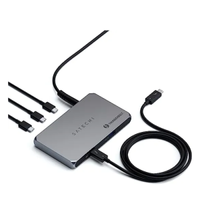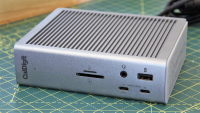TechRadar Verdict
The number of things wrong with this USB hub does question the process that Baseus went through to go from concept to retail product. For a dock/hub, it is inexpensive. But, the limited bandwidth and questions about its functionality make it less of a bargain.
Pros
- +
Cheap
- +
Metal construction
Cons
- -
Permanent USB-C cable
- -
Accessibility problems
- -
Made for a specific laptop size
- -
Thermal issues
Why you can trust TechRadar
GL-iNet Puli AX: 30-second review
What’s truly remarkable about the Elitejoy Gen USB-C hub is that it made it into production and sale without anyone involved noticing the apparent things that are wrong with it.
We’ll get to those quickly enough. What we have here is a USB-C Hub with twelve ports, or more realistically, eleven downstream ports and one upstream power source. And, for around $100, that initially seems like a good deal.
Where it diverges from other USB-C hubs we’ve seen is that this one also acts as a laptop support with a soft rubberised platform meant to raise the rear of the laptop up for better airflow underneath and a better typing angle. And, while not everyone wants the angle they’ve become accustomed to changing, better ventilation is never a bad thing.
However, it does assume that you have a laptop that isn’t much wider than 28cm and that the air vents underneath aren’t in the last couple of cm.
As the USB-C downlink cable is connected permanently on the left end, it also assumes that the charging port is on the left. Because if it’s on the right, which is not uncommon, then this layout won’t work from the outset.
Should your laptop fit those criteria, the Elitejoy Gen2 can provide a simple means to attach up to three displays (one DP and two HDMI ), an Ethernet connection, three USB 3.0 devices, an audio device on a 3.5 mm jack, and another two USB-C port devices.
Except if you wish to power the laptop via the hub, one of the USB-C ports will be needed to take up to 100W from an external PSU (not included) and redirect that to the computer.
There is also an SD card reader that accepts SDXC or MicroSD cards in two different slots.
Those thinking that the number of ports seems high considering the bandwidth of a single USB-C port have tuned into our first reaction, even if the connection is Gen2, as the name implies.
But inexplicably, it isn’t Gen2. It’s only Gen1, offering 5Gbps shared between all devices, some of which could use that entire amount (or more) in a single device.
For example, if you plug two USB SSDs into the hub, each capable of 10Gbps (approximately 1,000 MB/s), the best achievable speed between them is around a quarter of that level on this hub.
Using any monitor connections and other connected peripherals will suffer bandwidth starvation, and 5Gbps isn’t truly enough to drive a 4K display without compression.
Many hubs and docking stations operate a model of having insufficient bandwidth to run all ports at full speed, but few do have enough bandwidth to fully satisfy a single connected device.
These aren’t the only issues with this device, but they’re enough to convince us that when something looks too good to be true, it invariably is.
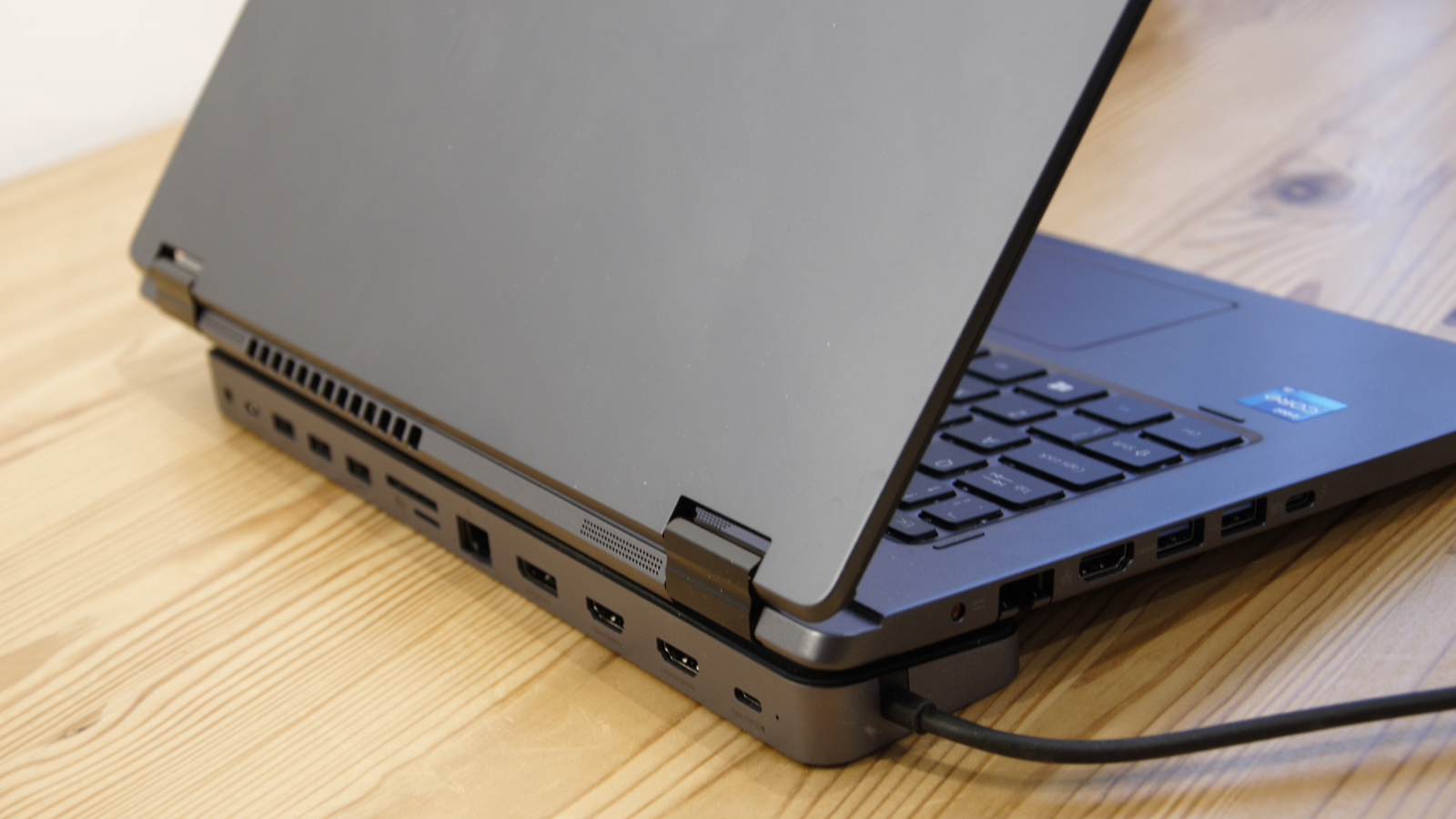
Baseus EliteJoy Gen2: price and availability
- How much does it cost? $100
- When is it out? Available now
- Where can you get it? You can get it directly from AliExpress
Available globally through AliExpress, the Baseus EliteJoy Gen2 12-Port Type-C Hub only costs $99.99, or £84.29 in the UK.
With free shipping, you are quoted a fourteen-day wait, but you do at least get free return shipping should you be displeased.
It’s worth noting that a number of other brands, most notably iVanky, sell a very similar design on Amazon.com, but most aren’t as cheap as this.
The best-branded alternative is made by Plugable, and they charge around $100 for the Plugable USB 3.0 Universal Laptop Docking Station (UD-3900).
Be careful ordering this model, as the 11-port version looks very similar and is about 20% cheaper.
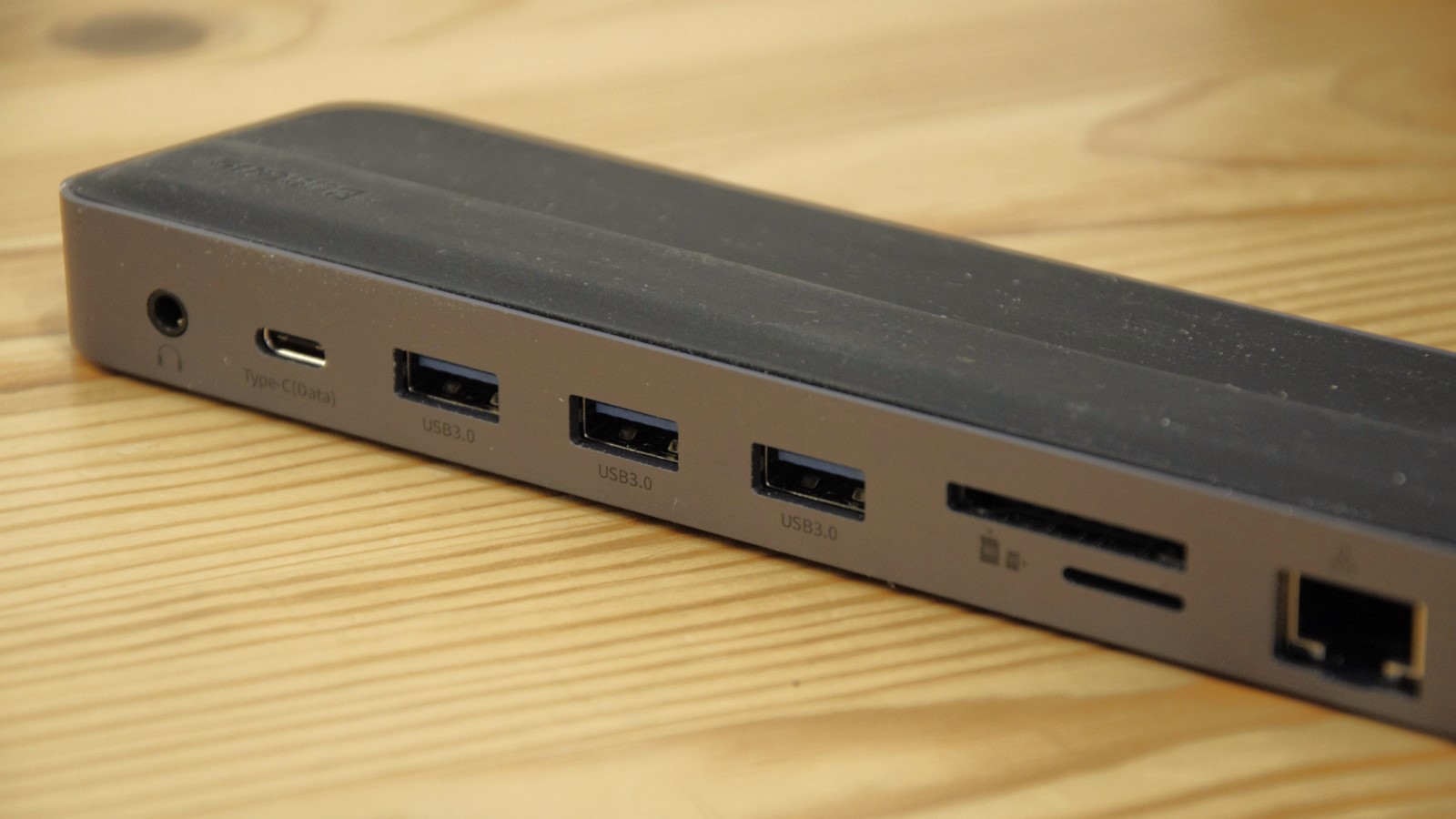
- Value score: 3/5
Baseus EliteJoy Gen2: Specs
| Model: | B5-OH062 |
| Ports: | 2x HDMI 2.01x DisplayPort2x USB 3.2 Gen 2 Type-A1x USB Type-C PD 100W1x USB Type-C Data3x USB 3.0 Type-A1x Ethernet 1GbE1x MicroSD reader1x 3.5mm Combo Audio Jack |
| PSU: | N/A |
| Dimensions: | 280 x 58 x 20mm |
| Weight: | 266g |
Baseus EliteJoy Gen2: design
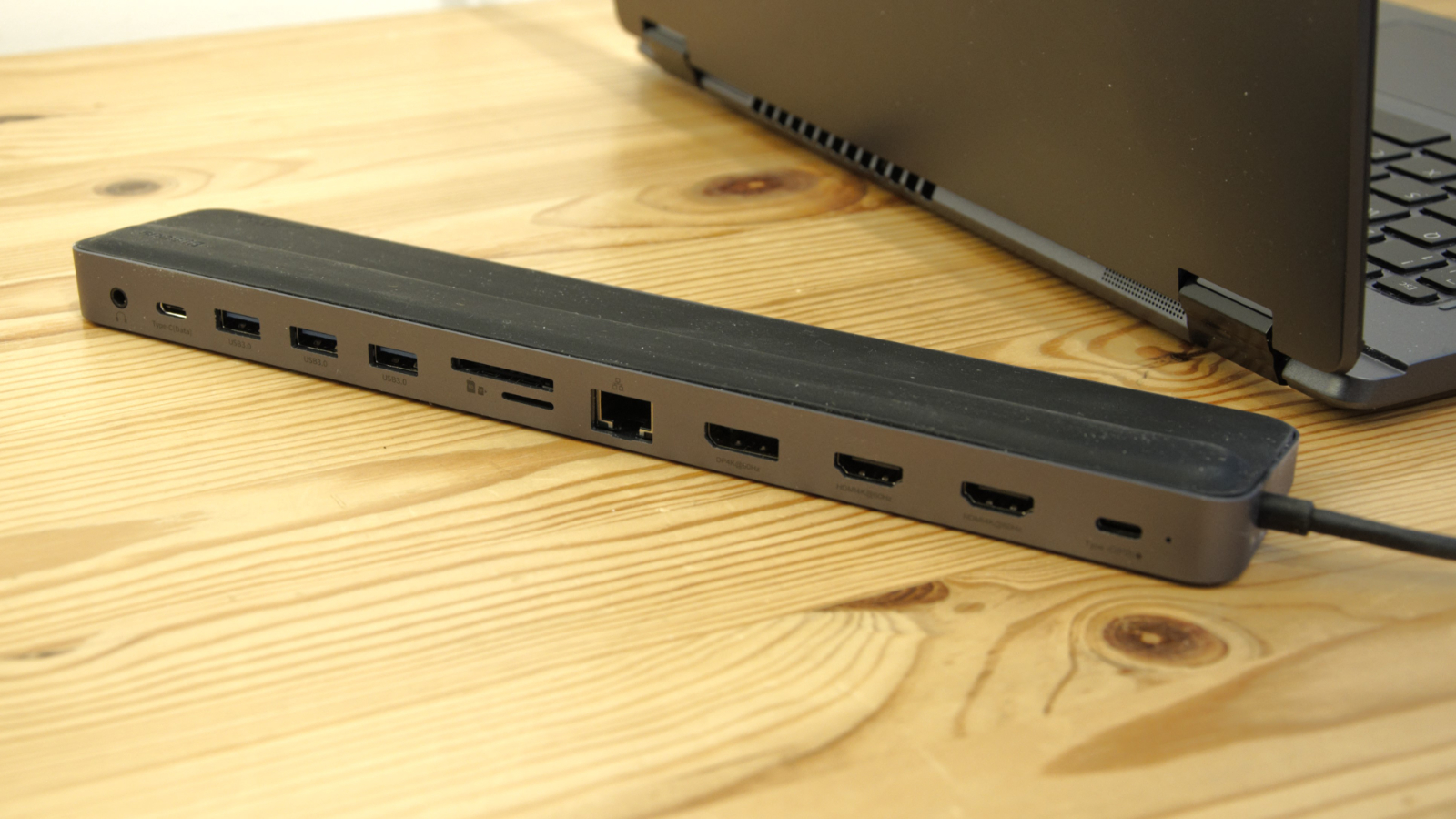
- Thermodynamic issues
- Avoid charging
As we’ve already covered the mechanics in our opening words, let’s talk about some of the features that aren’t obvious when you first get this shiny silver slab out of its packaging.
The best hubs and docks use Thunderbolt, but a few offer USB-C connectivity.
Where this design differs from theirs is that those, for the most part, took the distribution of heat as a serious concern, often using fans or ventilation to move warm air through their enclosures.
The EliteJoy Gen2 gives a middle finger to the gods of thermodynamics in that it has no vents or fan over its entire surface. These engineers designed a metal box packed with electronics into which it is possible to inject 100W (or more) of power, with no means other than heat radiating from the metal skin to remove that heat.
And, as the largest surface area on the underside is flat with no fins whatsoever and a remarkably small 1.5mm air gap created by the rubber feet, its ability to radiate heat successfully is limited.
That would be bad enough over any prolonged use, but if you sit a laptop on it, ejecting heat on its rear or underside, the combination provides sufficient heat to keep an artic survey station toasty.
This device isn’t just detrimental to the components of itself but also to any laptop used with it. Therefore, we’d strongly recommend that anyone using this not charge through it, and possibly not place it under the laptop if possible.
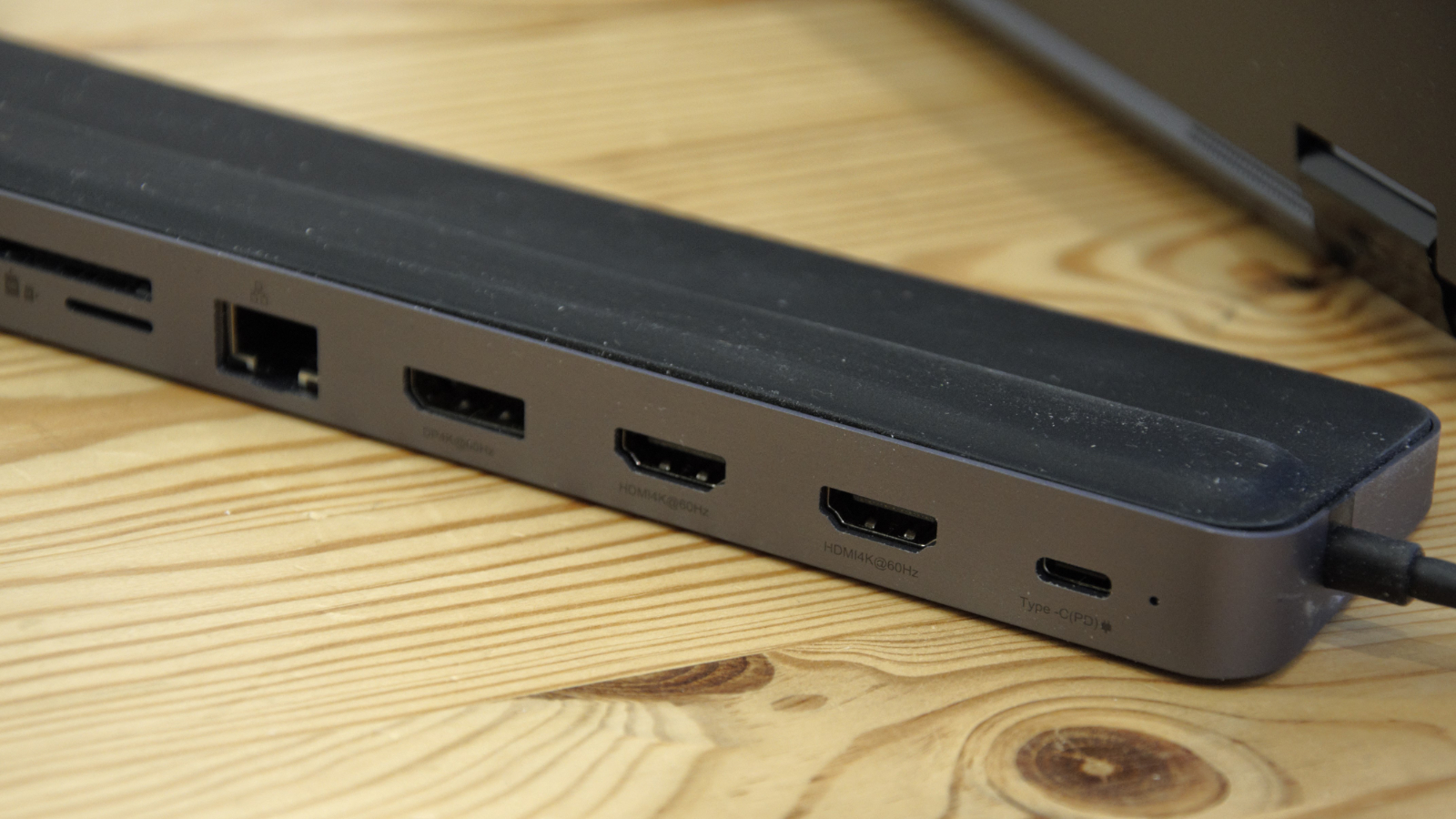
While not as important, we’d also like to mention that if you do use it under a laptop, you’ll immediately discover that you can’t easily find any of the ports without turning the whole ensemble around. This annoyance is especially true of the SD card slot, which you would never be able to locate using touch alone.
Why no ports were put on the ends, where they might have been accessible, is another mystery to add to the many surrounding this device.
As an example of industrial design, this product lacks due diligence or critical eye in its development or manufacture.
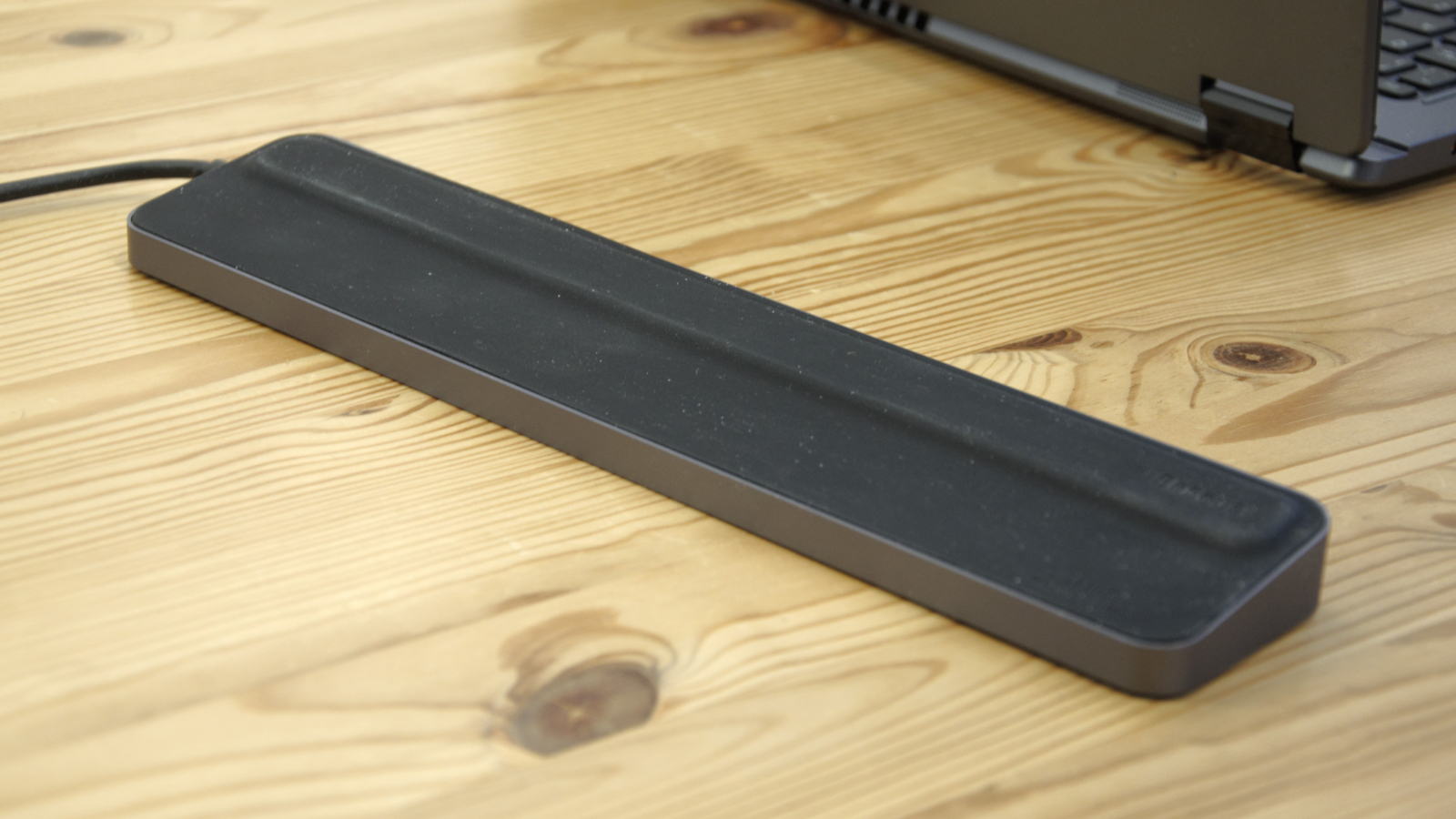
Design score: 1/5
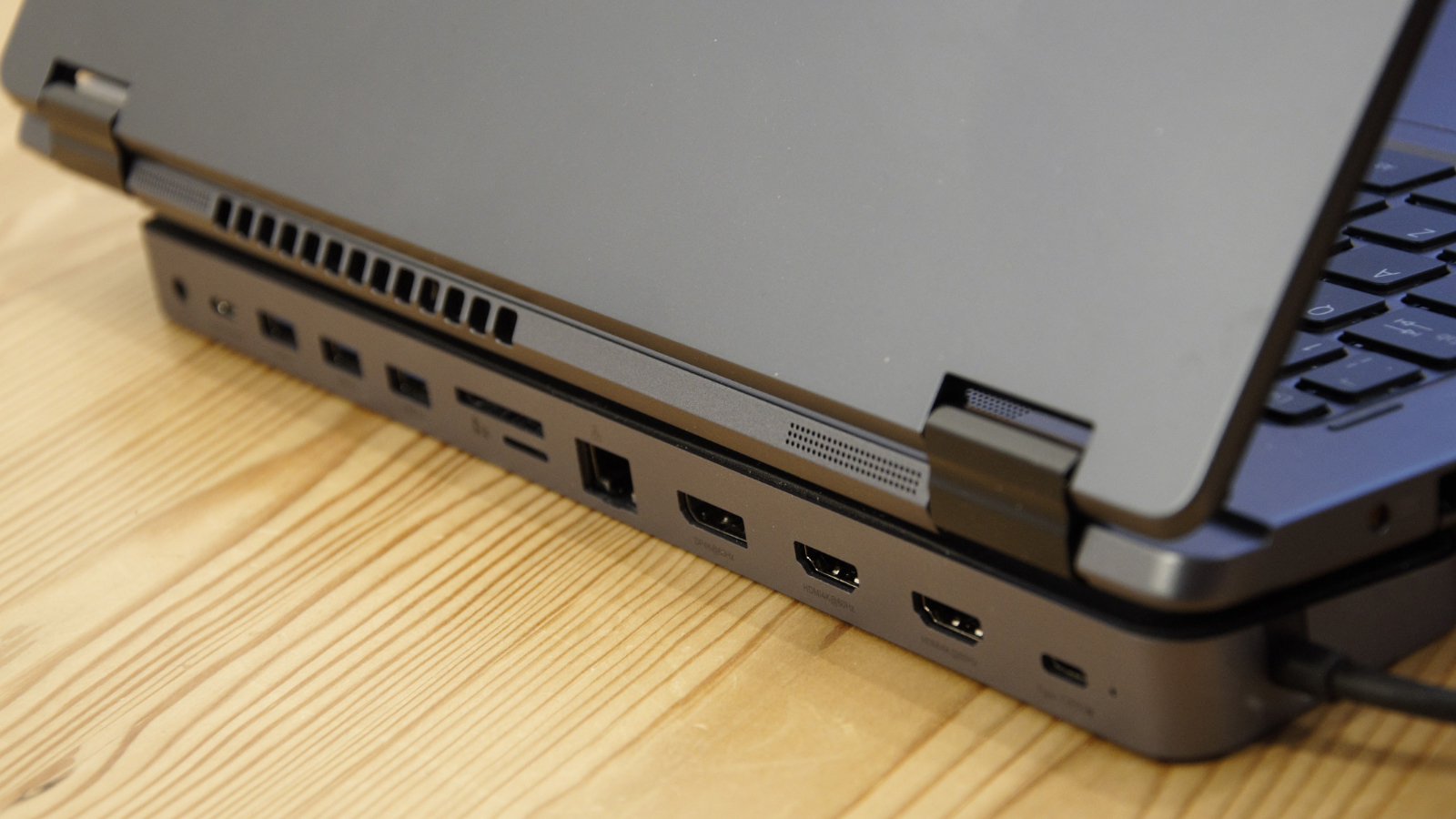
Baseus EliteJoy Gen2: Verdict
Rather than harping on about how bad this product is, perhaps the best way to end this review is with some practical suggestions as to how it might be improved.
Firstly, some active ventilation needs to be part of this product since a sealed metal box with rubberised insulation on one side is never going to end well when things get hot.
The ends need to telescope to accommodate larger than 13-inch laptops, and those ends need to have ports in them, ideally providing a connection to the machine at both ends.
To become transformed into a practical solution, the hub needs to connect using USB 3.2 Gen 2 speeds, as the bandwidth offered by Gen 1 isn’t enough to use more than a handful of the twelve ports simultaneously.
Questions also exist about the power management used and how that might damage the host or the peripherals connected, and those need to be resolved.
But if it was my money, I’d buy a docking station from a reliable brand, like Plugable, and not this questionably engineered device.
Should I buy a Baseus EliteJoy Gen2?
| Attributes | Notes | Rating |
|---|---|---|
| Value | For the number of ports, it is cheap | 3/5 |
| Design | The lack of ventilation and the choice of USB 3.0 are both questionable decisions, not well-considered. | 1/5 |
| Overall | AA poorly conceived and executed design that could generate a thermal runaway scenario. Why would you not buy it? | 2/5 |
Buy it if...
You have a sense of adventure
Given many of the obvious limitations of this design and some dubious electrical engineering, experiences might wildly differ. But potentially, it might offer a better keyboard angle and an easy way to charge a laptop and connect a host of peripherals. Or it might overheat and damage the laptop and impact all the things connected. Neither of these scenarios is guaranteed, but one is probably more likely than the other.
Bandwidth requirements are low
If you only intend to use this device occasionally or with a single low-bandwidth device, it might work. But ask yourself why you are not connecting it directly before purchasing one.
Don't buy it if...
Want to use more than one peripheral
With only a single USB 3.2 Gen 1 connection to share around, there isn’t enough bandwidth to use a connected external SSD and a DisplayPort monitor at the same time without impacting both. Get a USB docking station that uses USB 3.2 Gen 2 as a minimum, and ideally, one with Thunderbolt if you have that port.
Your peripherals are valuable
In testing, we had various voltage fluctuations that peripherals wouldn’t like, and this also manifested in inconsistent file transfer results to connected storage. As a result, we’d never connect this to storage that contained the only copy of a file, ever.
Also consider
Satechi Thunderbolt 4 Slim
A fully featured USB-C and Thunderbolt dock that is beautifully engineered and can pass power to charge a connected laptop. It only offers five ports, but it has sufficient bandwidth to make all those fully functional. It costs twice the EliteJoy Hub price, but provides a much more flexible device.
Click here for more information about the Satechi Thunderbolt 4 Slim.
CalDigit Thunderbolt Station 4
This is the docking station that every laptop wants to be connected. It has 18 ports, can connect using USB or Thunderbolt (including USB 4.0) and can deliver up to 98W for charging.
The snag is that technology this well designed and built costs over $450. But is worth every penny.
Check out our CalDigit Thunderbolt Station 4 review.
Didn't find what you wanted? Check out our selection of the best Docks and Hubs
Mark is an expert on 3D printers, drones and phones. He also covers storage, including SSDs, NAS drives and portable hard drives. He started writing in 1986 and has contributed to MicroMart, PC Format, 3D World, among others.

